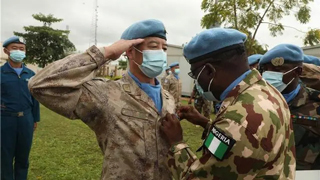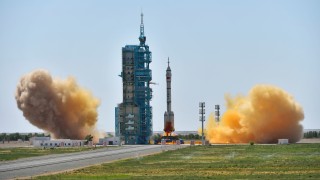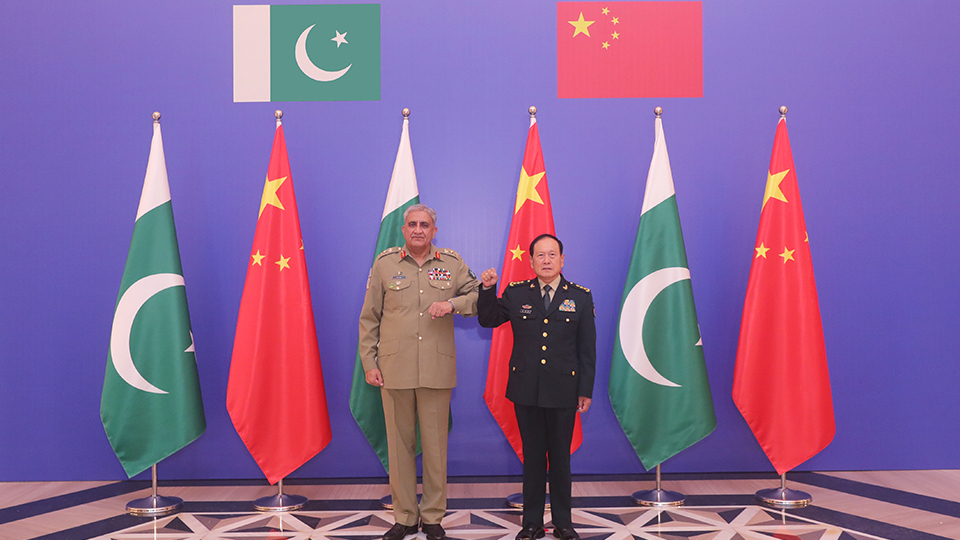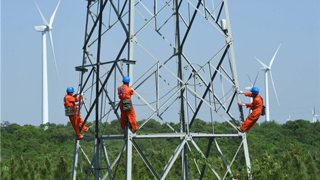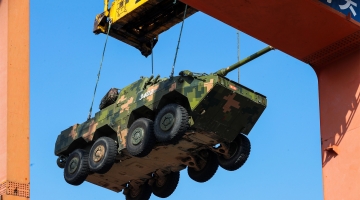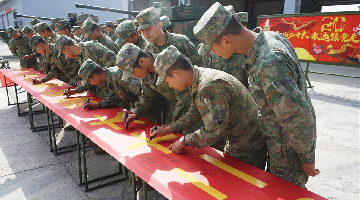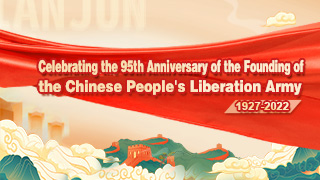
A facility in the suburbs of Beijing provides a bridge to the past and holds evidence of crimes committed by invading troops. Zhao Lei reports.
Ouyang Min, a senior member of staff with the international cooperation team at the Museum of the War of Chinese People's Resistance Against Japanese Aggression in Beijing, said she is proud of her job because it gives her an opportunity to tell people outside China about what happened to her country just a few generations ago during World War II.
"During an exhibition we held at the Belarusian State Museum of the History of the Great Patriotic War in Minsk, a family from Russia told me that the only reason they had travelled to Minsk was to see our exhibition," Ouyang said. "They said they were very interested in the history of the war, but couldn't find sufficient materials in Russia."
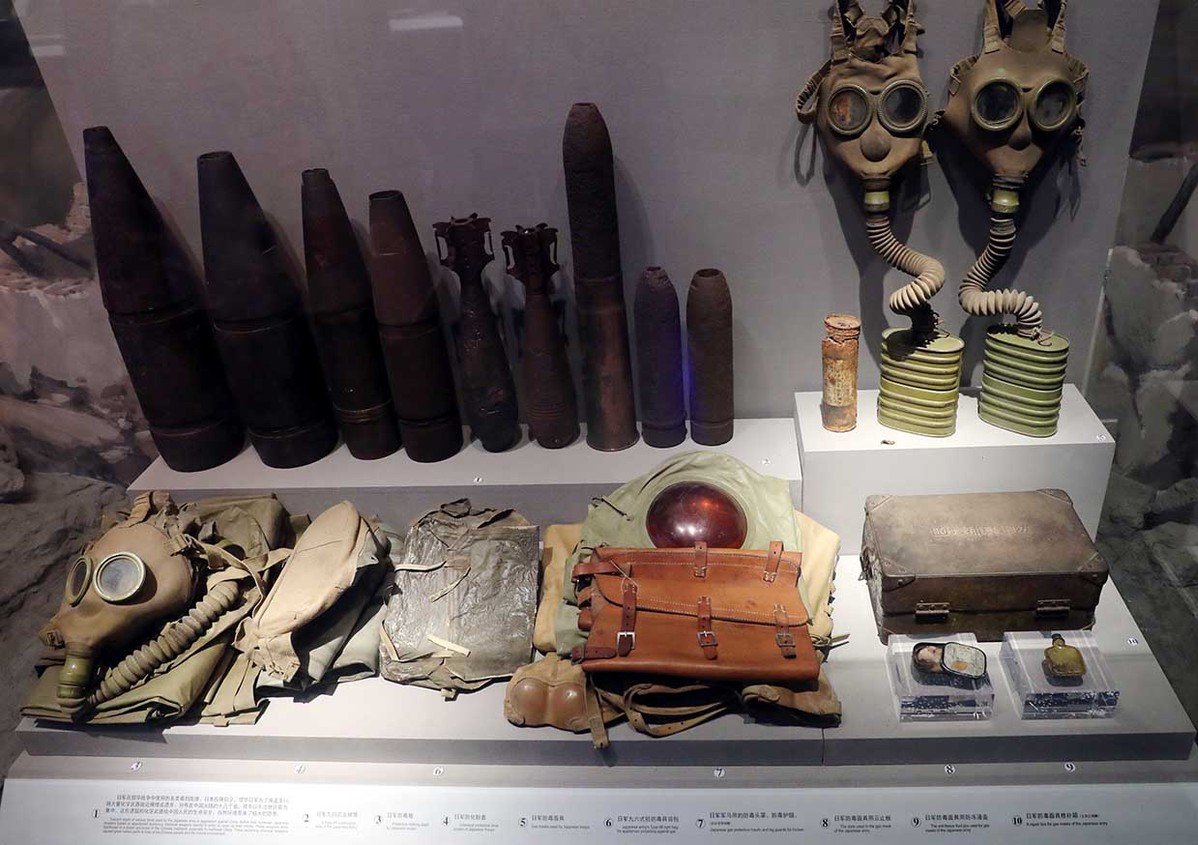
Ouyang added that the parents told her that few people in Russia really knew the details of the Chinese people's fight against the Japanese, and expressed the hope that Ouyang's museum would bring such meaningful exhibitions to their country.
She recalled that when the museum organized an exhibition in the United States, the locals asked many questions about the war and spent a long time speaking with the Chinese guides.
"Some of them seemed to doubt what they had seen at the exhibition and the things our guides had told them. We agreed to disagree. At least they got to learn something they hadn't known, or started to think about things they hadn't thought about before. Some may even have tried to find more materials to check if we were telling the truth," she said.
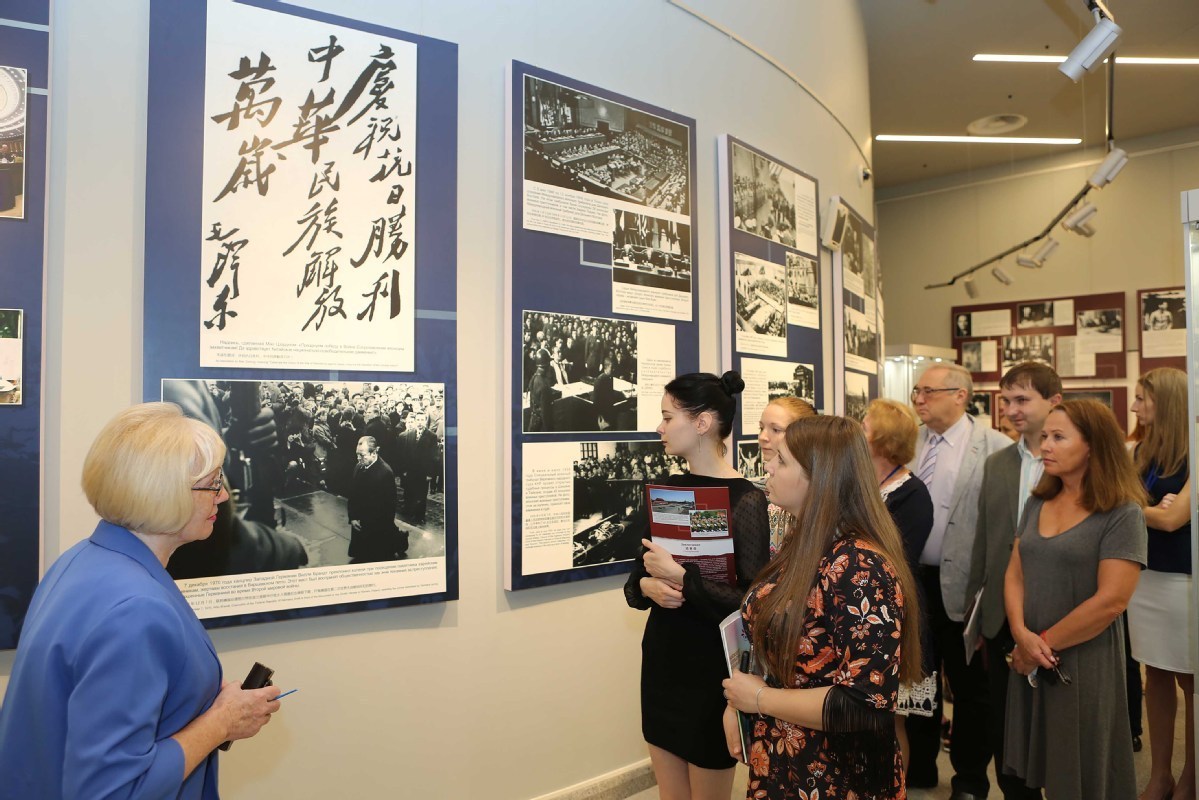
Exchanges
In addition to direct communication with ordinary visitors, Ouyang's museum uses an international platform to promote communication and exchanges, she said, referring to the International World War II Museum Association.
Under arrangements made by the association, which was initiated in 2015 by the Chinese museum and the Museum of the Great Patriotic War in Moscow, sister museums are encouraged to exchange replicas of their exhibits and to host exhibitions at each other's premises.
Moreover, employees from the association's member museums can take part in exchange programs that usually last several months.
Ouyang said the exchange arrangements have allowed a number of employees of foreign museums to work at the museum in Beijing.
"They came here and stayed with us for three to four months. They became involved in many aspects of the museum, such as historical research and organizing exhibitions or symposiums," she said.
"They seemed to have three roles during their stays here: student, researcher and staff member."
She added that the exchange programs have proved beneficial to both the participants and their hosts.
"When their exchange program ended, we asked them for their thoughts," she recalled.
"A common response was that the programs allowed them to gain deeper, more comprehensive knowledge about the history of the Chinese people's resistance against the Japanese invaders."
The visitors said they knew little about China's role during World War II. However, after spending several months at the museum, they became more familiar with the history, and could name key figures and events on Chinese battlefields.
In addition, they could take that knowledge back to their home countries to enlighten more people, according to Ouyang.
"The foreign staff members said they appreciated China's efforts to memorialize and commemorate the war via our vast museum system. They said the exchange programs had allowed them to gain a better understanding that China's diplomatic policies are aimed at pursuing and safeguarding world peace and development," she said.
Ouyang said she and her colleagues have also gained a deeper understanding of the things their foreign peers' countries endured during WWII, as well as many other aspects of the global resistance to fascism.
"In the past, inadequate communication meant we might have had poor knowledge about or misunderstanding of their histories, politics or customs. Now, we have the chance to learn from each other and understand the differences between us," she said.
"Working and talking with the exchange employees also helps our work because we can see and understand their strongest suits in museum management and operation."
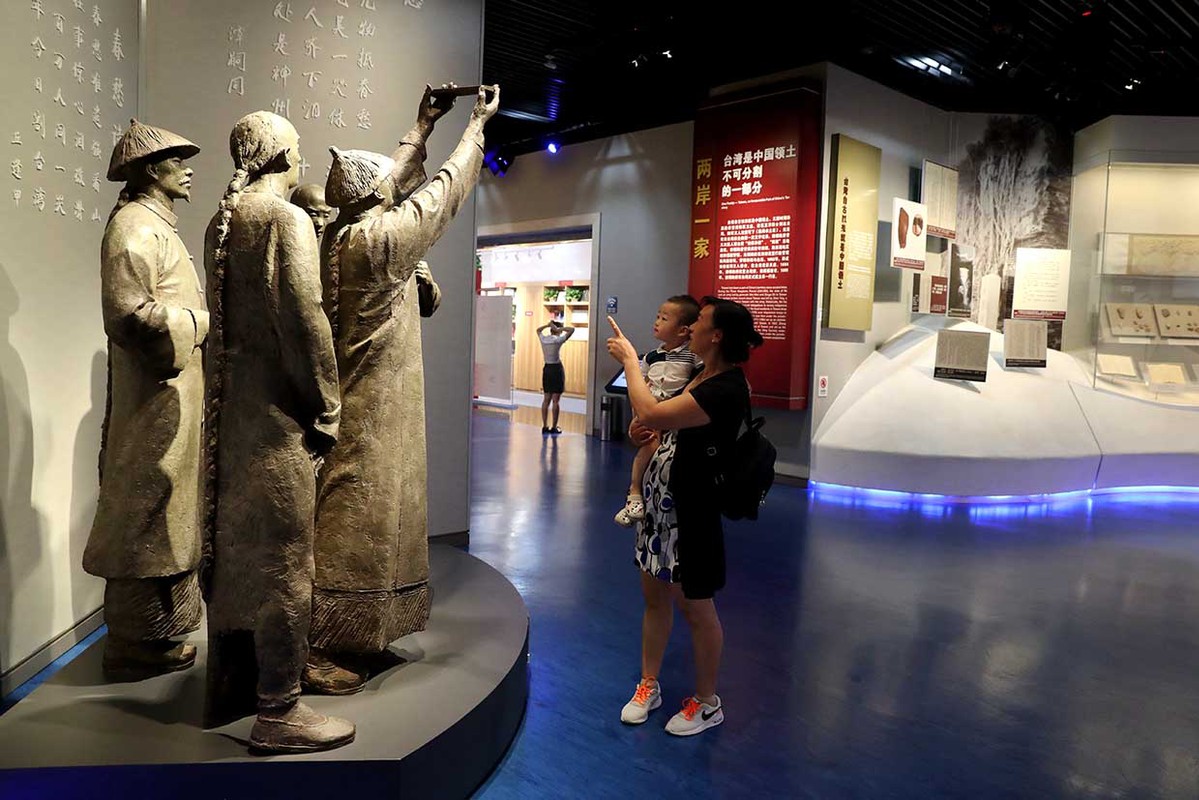
Start of the struggle
The Museum of the War of Chinese People's Resistance Against Japanese Aggression is located near Lugou Bridge, also known as Marco Polo Bridge, in the southwestern suburbs of Beijing.
On July 7, 1937, soldiers from the Imperial Japanese Army attacked Chinese forces at the bridge. While the event-known as the "Marco Polo Bridge Incident"-is generally recognized as the start of nationwide war against the Japanese invasion, the struggle really began in September 1931, when Japanese troops began an invasion of Northeast China.
In the early 1980s, rightist factions in Japanese political circles repeatedly denied the truth about their country's aggression in China, and some politicians even tried to justify acts that have been labeled war crimes.
In response, many Chinese called for the establishment of a national museum to commemorate and memorialize the nation's struggle against the invading Japanese.
The government approved the founding of the museum in October 1984. After three years of construction and preparations, the facility opened on July 7, 1987, the 50th anniversary of the start of Japan's full-scale invasion.

During the past 32 years, the museum has held more than 150 themed exhibitions and received over 35 million visitors from home and abroad.
Three of China's top leaders-Xi Jinping, Jiang Zemin and Hu Jintao-have visited the museum to mark important wartime anniversaries.
The facility, now a center for patriotic and national defense education, was visited by more than 1.3 million people last year.
Yang Yanzhe, a senior guide at the museum, said that every month she receives groups of visitors from overseas, mainly diplomats and students.
She added that by her reckoning, the number of such visitors has risen since 2015, when many countries marked the 70th anniversary of the end of WWII.
"Most of the visitors were interested in the facts of the Japanese atrocities displayed at the museum. They told us they were shocked, saddened and infuriated by the savage acts," Yang said. "They were also eager to know about the role of the Communist Party of China in the struggle against the Japanese."
In addition, many visitors are intrigued when they discover exhibits or introductory texts related to their own country.
"For example, Russian guests normally care about our two nations' collaboration during the war, and the Soviet Union's aid to China. People from Israel usually want to know about the assistance Chinese diplomats gave to Jewish refugees escaping from the Nazis.
"Those from South Korea are often curious about China's help in their nation's independence movement. After viewing our exhibitions, many South Korean visitors said they were grateful for China's support for their country during the war, and they wanted to thank us for displaying content relevant to the Korean people's struggle for freedom and independence at a national-level museum in China," Yang said.
She said she has noticed that a tour of the museum is like a history class for some younger foreign guests.
"Some young visitors told me and my colleagues that they barely knew their nation's history in WWII, especially its role in China's fight against the Japanese," she said.
"For instance, I was truly surprised by a team of Columbia University students who said they had never heard of the Flying Tigers."
The nickname "Flying Tigers" was used by the 1st American Volunteer Group, which was part of China's air force in the early 1940s.
Headed by General Claire Chennault, pilots in the Flying Tigers-all former members of the United States military-were undoubtedly the best-known and most-loved Americans in China during WWII.
Yang said most visitors from Japan were objective and wanted to learn about the historical truth.
"They said there had been deliberate distortions in the education of young people in Japan, with a lot of factual absences or errors in historical narratives," she said, adding that many Japanese visitors asked permission to take photos of some exhibits.
"They explained that they hadn't seen such documents or photos in Japan, and they wanted to bring those images back home so people could see them."
Yang said she took part in a six-month exchange program at the Independence Hall of Korea in Cheonan, Republic of Korea.
She added that the experience was very meaningful to her, because she made full use of the opportunity to learn about South Korea's history and the country's time-honored ties with China.
Such occasions are beneficial to both sides, she said.
"We shared our expertise and experience in organizing large-scale events and receiving big groups with our South Korean peers. They were inquisitive about the technology and equipment at our museum," she said.
Yang added that she and her coworkers helped their South Korean peers improve the Chinese-language introduction in the museum in Cheonan.
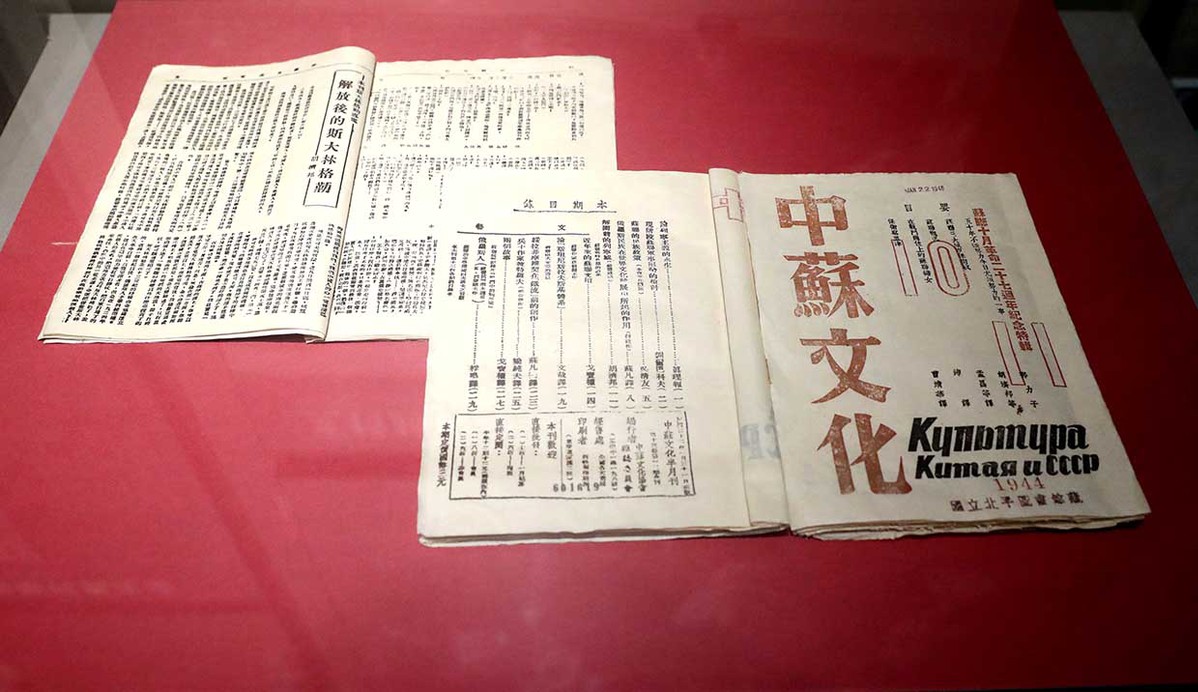
Lost documents
Qiao Lingmei, a senior researcher at the museum, said researchers have been working hard to investigate and verify the whereabouts of precious documents and relics relating to the war.
"We will spare no efforts to find them, so they can be better preserved, researched and shown to the public," she said.
Qiao, who has worked to collect and preserve historic relics for more than 35 years, said she has many unforgettable memories related to her work at the wartime museum.
"Many years ago, I was included in a small team that was sent to find and collect relics in Northeast China. During a chat with residents in Dunhua, Jilin province, we were told there was a pile of old artillery shells in the backyard of a store that might be of interest to us," she recalled.
Qiao and her colleagues rushed to the shop and were surprised to find the shells had been left by the Japanese, and that some of them were chemical weapons.
"We shook some of the shells and it sounded like there was liquid inside them. A local told us they could be chemical weapons and showed us his injured hands, which he said had been burned by chemical gases in the shells," she said.
The team was aware that the shells could be evidence of Japanese atrocities, which meant they were valuable objects and worth preserving.
"We contacted an explosives disposal specialist at a local ordnance factory to seek assistance. He helped us sort the shells and pick those that were not hazardous. We bought those particular shells from the storekeeper and brought them back (to Beijing)," Qiao said.
She stressed that every time she and her colleagues discuss their experiences of travelling around China finding and collecting relics, they feel honored because their work has helped testify to the history of the Chinese people's wartime struggle against the invading forces.
